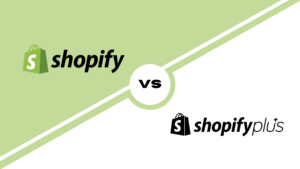The eCommerce marketing ecosystem is fueled by measuring ‘revenue’ as the main metric. Revenue, in itself, is just a vanity metric, popularized partly by eCommerce gurus trying to sell courses on making $$$ from eCommerce stores.
In this article, we will cover 5 better metrics you should track to accurately measure your eCommerce marketing success.

I usually measure all these metrics for my clients and businesses each month. A monthly frequency is ideal to see any changes on these metrics.
If you’ve already found an ideal process for your business, most of the metrics will stay constant or improve over time. This means you have a sales funnel setup.
If not, you need to work on process improvement to stabilize your eCommerce marketing funnels.
Before we get into the list, please note that this list is only for serious long-term eCommerce store owners and eCommerce marketers. Drop-shippers and side-hustlers may not enjoy these metrics.
With that said, let’s get started!
Website: Revenue per website visitor, Measure with: MoM Traffic growth rate
Your online store is the gateway for all your marketing channels and the conversion rate, as well as the average ticket size, will determine your ‘revenue per visitor’ metric.
Hence, This metric includes both measurements of conversion rate and average ticket size. Each of these metrics alone doesn’t accurately describe your business.
For example, a 5% conversion rate could be considered high but for a $9 product, it could be easier to hit a 5% conversion rate than a $99 product or a $999 product for that matter.
Similarly, a $500 average ticket size can be considered good but if the conversion rate is 0.01%, it does not describe the entire business accurately.
Also, just measuring revenue from the website doesn’t talk about the quality of traffic.
This is why I pick revenue per visitor. Here are the factors that affect this metric:
- Quality of the traffic to your store
- The average ticket size of the orders
- Your e-commerce conversion rate
If you’re on Shopify, this calculation will be easy for you and can be found on your dashboard.
Deep dive: What should be your eCommerce conversion rate?
The only thing it doesn’t measure is the volume of traffic you have. Rather than the volume, I suggest measuring the Month-On-Month traffic growth rate of your website.
So with the metric combo ‘Revenue per visitor + Traffic growth rate’, you can very accurately describe progress as an ecommerce store if you’re a serious long-term entrepreneur or marketer.
Email Marketing: Revenue per email subscriber, Measure with: MoM Email list growth rate
If you’ve understood the first metric, this will be easy to grasp. Just like we measure revenue per website visitor, we can measure the revenue per email subscriber.
We’re now getting into each marketing channel as the website metrics are broader since that includes all your ecommerce marketing channels.
To accurately track the success of email marketing as a channel, start with the revenue per email subscriber. Here’s what the metric tells you:
- Quality of email subscribers
- The average ticket size of orders from email
- The conversion rate of your email campaigns and flows
Having a tool, like Klaviyo, calculates this metric for you.
Now, to add monthly progress measurement to this, measure this along with your month-on-month email list growth.
Further, if your fundamental email subscriber acquisition process is strong, the monthly growth should not harm your revenue per subscriber much.
This means you can expect a constant or better revenue per subscriber value as your email list grows.
If you see a decline, it means you might be scaling your business at the cost of quality. You could be adding low-quality email subscribers or not sticking to the fundamentals of growth.
Ad Campaigns: Revenue per dollar of ad spend, Measure with: Profit margins on sales
Paid ads are the biggest revenue source, especially for new eCommerce businesses. They often come at a high cost, unless you have a high ROAS on your ad campaigns along with high-profit margins on your product sales.
A large number of dropshippers who start a store merely to create an online course about it will scale ad campaigns at a low profit margin just to show vanity numbers and get more people to buy their courses.
As a serious entrepreneur or marketer, it’s more important to see ads as follows:
- As a source of user acquisition in the first 1-2 years (and later focus on Lifetime Customer Value and repeat purchases with high ROI through organic channels)
- As a source of revenue with margins after 1-2 years
The 1-2 years range depends on how big your market is and hence, how fast you can create a niche in that market so people start recognizing your brand, search for your organically, and join your email list.
Once you’re out of this phase, you can start seeing ads as a source of revenue in which case it’s important to measure the revenue per dollar of ad spent.
This is also called ROAS or Return on Ad Spent. Along with the ROAS, it’s also important to measure the profit margin on your product sales. Else, ROAS wouldn’t be a useful metric at all.
For example, a ROAS of 5x sounds great as it means you spent only 20% of your product price on the sale through advertising. However, if your profit margin is only 10%, you would still lose 10% on this sale even with a 5x ROAS.
Organic Social Media: Revenue per social media follower, Measure with: Organic social media growth rate
Organic social media, like email marketing, will be one of your high ROI eCommerce marketing channels in the long run.
Unlike ads, you won’t have to spend each time want your followers to see your content.
However, I should add here that this is becoming worse over time as social media channels push brands to run ads even to target content to their own followers.
That said, if you can create a highly engaged organic brand on social media, the algorithms will still show you some love.
The metric to measure here is not just revenue from social media as a channel or the number of followers. Instead, you should measure the revenue per social media follower.
Here’s what this metric shows:
- The quality of your social media followers
- The average ticket size from organic social media as a channel
- How well your social media content converts
Measure the month-on-month social media organic growth rate with this and you have yourself an ecommerce sales funnel.
As long as your quality of followers is stable, your revenue per follower should remain stable or improve month on month.
Influencer Marketing: Revenue Per Influencer Collaboration, Measure with: Cost per Influencer collaboration
Influencer marketing has emerged as its own channel and should be treated independently of organic social media in terms of tracking and analytics.
As a new store, you can start out with micro-influencers with any number of followers more than your store to get results. In this case, you would usually exchange your products for content collaboration with the influencers.
As you grow, you will need influencers with a larger multiplier of followers compared to your own brand to get real results.
In this case, you would also have to pay influencers in exchange for their content apart from shipping them your products.
Learn More: Influencer Marketing Case Study
The best metric to track for your influencer marketing efforts is the revenue per influencer collaboration.
The reason for measuring this as an average metric per influencer collaboration is that some collaborations might work and some might not. And this is normal.
You cannot accurately guess the revenue an influencer can generate just from their followers or even engagement rates.
I’ve found it almost in vain to think high engagement rates will also mean more revenue.
Don’t believe me?
Here’s an example of an Instagrammer with 2 million followers, and a decent engagement rate, who couldn’t even sell 36 t-shirts.
So it’s better to play safe initially and measure the average revenue per influencer collaboration.
Next, once you start shelling out your revenue to invest back in influencer collaborations, start to measure the cost per influencer collaboration too.
At the end of the month, you can compare the revenue per influencer collaboration to the cost.
This will give you an accurate description of how well your influencer marketing is performing as an eCommerce marketing channel.
So at the end of each month, along with the influencer-wise review, calculate the average revenue per influencer as well as the average cost per influencer. This will give you an overview of your influencer marketing efforts.
Overall, these metrics will give you more depth and meaning than just measuring revenue.
And once you’ve understood the concept of calculating revenue as a factor of another variable, you can keep adding such metrics in the future as you add more eCommerce marketing channels to the mix.
To give you an overview, here’s a list of all the eCommerce marketing metrics we discussed in the article:
- Revenue per website visitor
- The month-on-month traffic growth rate
- Revenue per email subscriber
- Month-on-month Email list growth rate
- Revenue per dollar of ad spend
- Profit margins on sales
- Revenue per social media follower
- The organic social media growth rate
- Revenue Per Influencer Collaboration
- Cost per Influencer collaboration
These will be the most impactful metrics on your monthly reports!
All the best for your eCommerce store success.
Suggested free content: Complete Ecommerce Marketing Strategy and Guide



